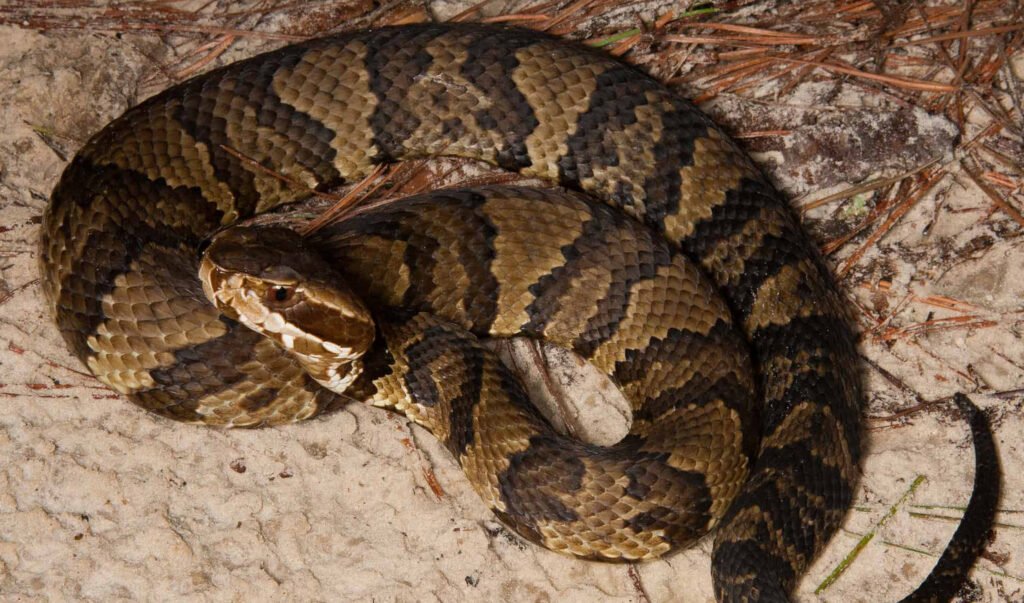Virginia, a state known for its diverse wildlife and natural beauty, is home to a variety of captivating snake species. From the venomous Eastern Copperhead to the non-venomous Eastern Ratsnake, these reptiles play an essential role in Virginia’s ecosystem.
This article aims to provide an overview of some notable snake species found in the state.
- Eastern Copperhead
- Northern Cottonmouth
- Timber Rattlesnake
- Eastern Hog-nosed Snake
- Eastern Ratsnake
- Northern and Southern Ring-necked Snake
- Red Cornsnake
- Eastern Gartersnake
- Northern Watersnake
- Plain-Bellied Watersnake
- Southeastern Crowned Snake
1. Eastern Copperhead (Agkistrodon contortrix)
The Eastern Copperhead is a venomous snake with distinctive hourglass-shaped markings on its body. It is primarily found in wooded or rocky areas and is known for its camouflaged appearance. Caution should be exercised when encountering this species due to its venomous nature.

2. Northern Cottonmouth (Agkistrodon piscivorus)
Also known as a water moccasin, the Northern Cottonmouth is a venomous snake often found in and around water sources. It is recognizable by its thick body and distinctive white mouth. This snake primarily feeds on fish and amphibians.
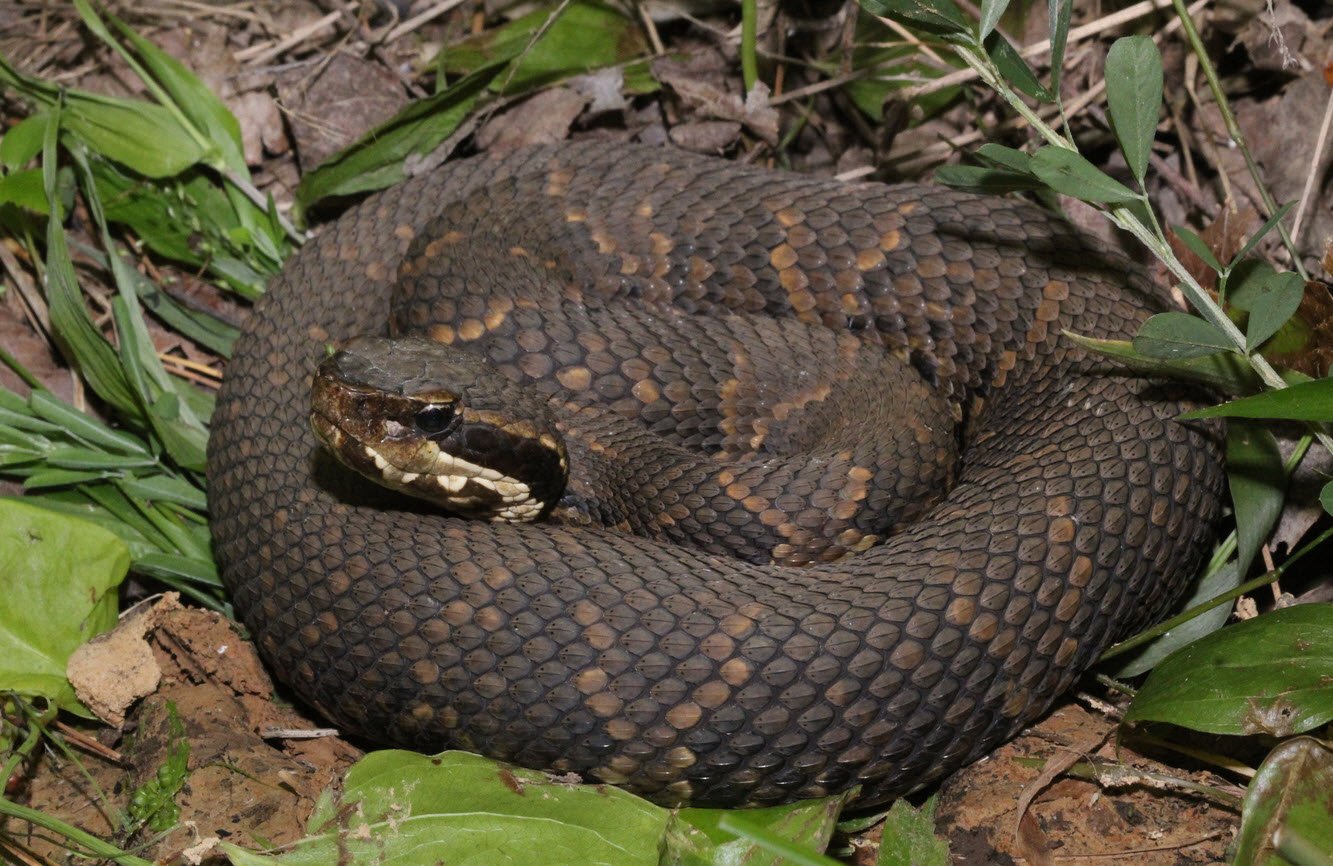
3. Timber Rattlesnake (Crotalus horridus)
The Timber Rattlesnake is a venomous snake known for the rattling sound it produces by shaking its tail. It has a robust body and a distinct pattern of dark markings. This species is typically found in wooded areas and is known to be a skilled hunter.
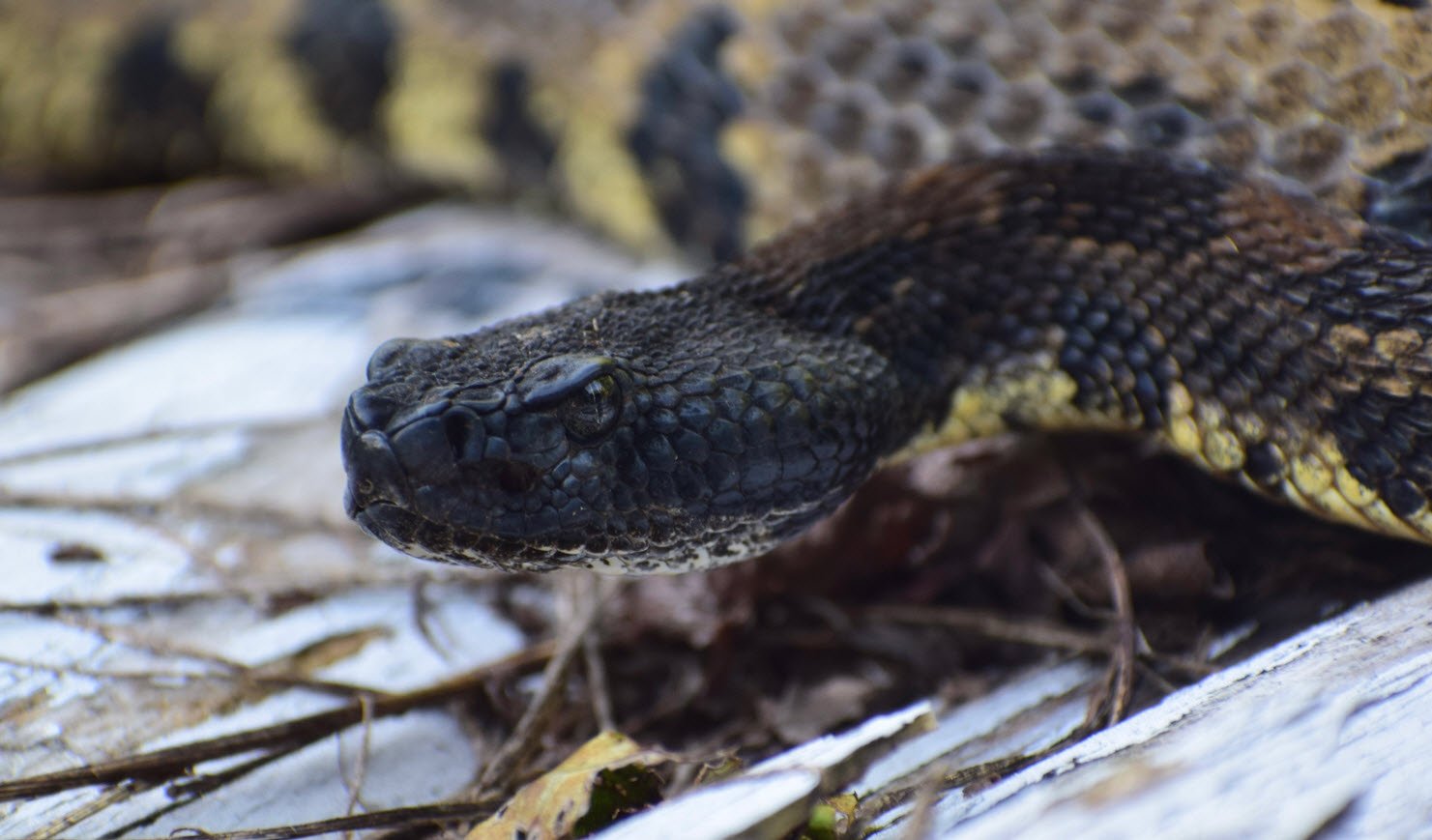
4. Eastern Hog-nosed Snake (Heterodon platirhinos)
The Eastern Hog-nosed Snake is a fascinating non-venomous snake with a distinct upturned snout. It comes in various colors, including yellow, gray, and brown, and can flatten its head to resemble a cobra when threatened. Despite its intimidating appearance, this snake is harmless to humans.
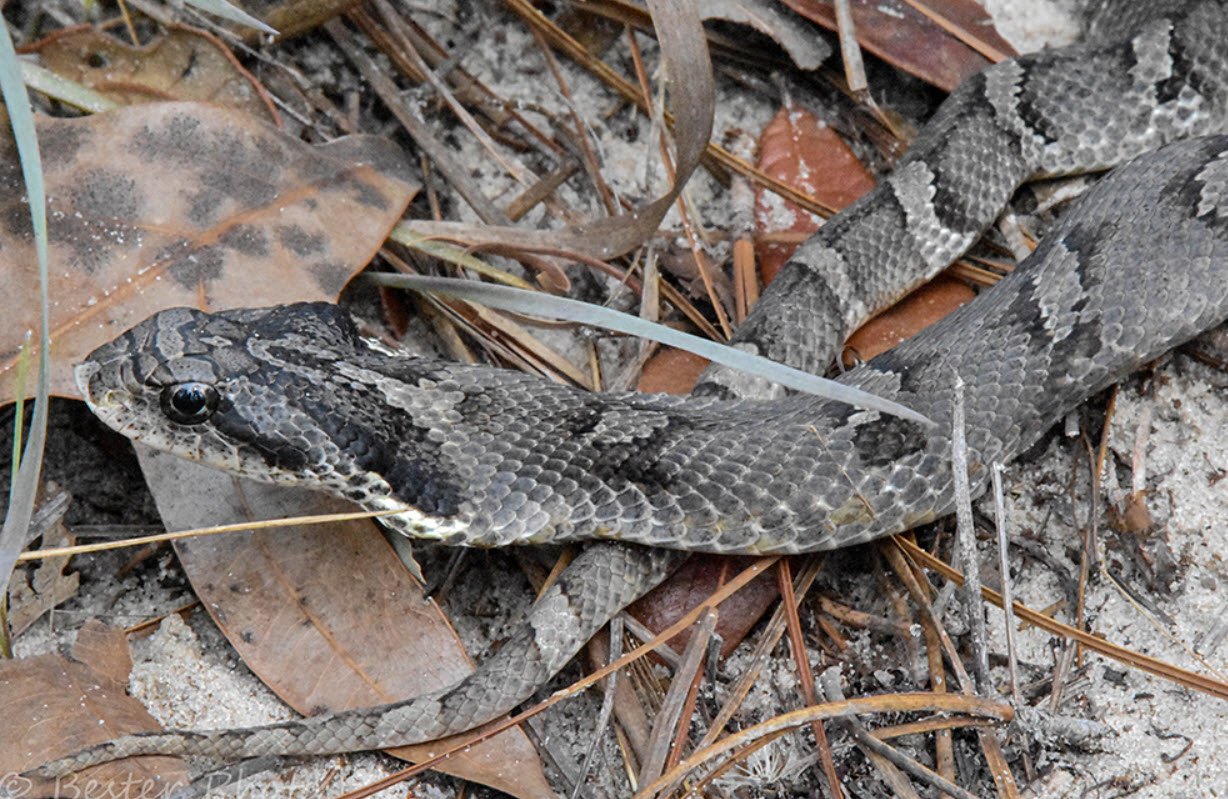
5. Eastern Ratsnake (Pantherophis alleghaniensis)
The Eastern Ratsnake is a non-venomous snake with a slender body and a variety of color patterns, ranging from solid black to brown with darker markings. It is an excellent climber and feeds on rodents and birds.
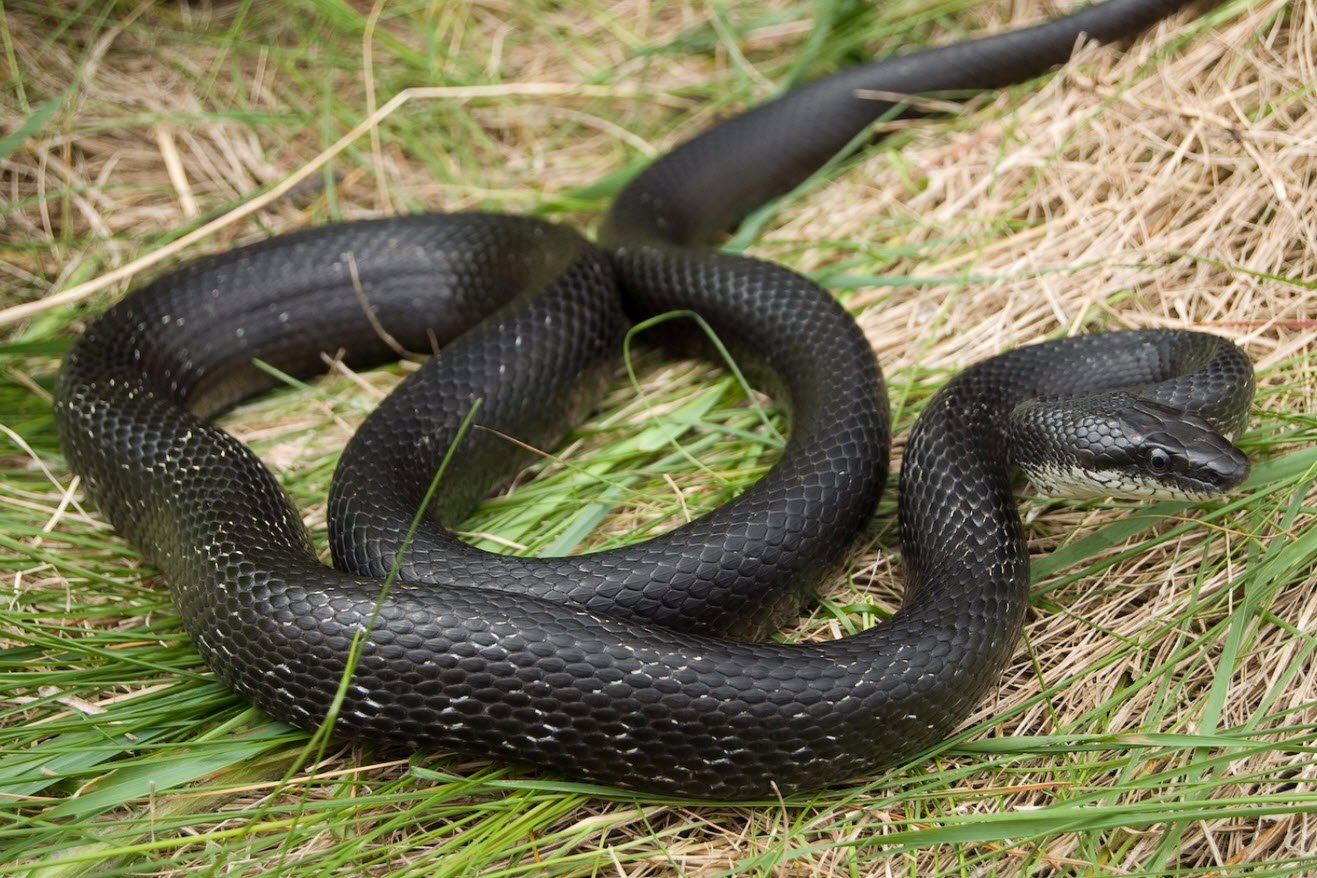
6. Northern and Southern Ring-necked Snake (Diadophis punctatus)
Ring-necked Snakes are small and slender, with distinctive yellow or orange rings around their necks. They are non-venomous and primarily feed on insects, earthworms, and small amphibians. Both the Northern and Southern varieties are found in Virginia.

7. Red Cornsnake (Pantherophis guttatus)
The Red Cornsnake, also known as the Red Rat Snake, is a popular snake in the pet trade due to its attractive red and orange coloration. It is non-venomous and can grow to be quite large, reaching lengths of up to 4 to 6 feet. In the wild, it preys on small mammals and birds.

8. Eastern Gartersnake (Thamnophis sirtalis)
The Eastern Gartersnake is a common and non-venomous snake known for its distinct stripes and vibrant coloration. It primarily feeds on a diet of insects, earthworms, and small amphibians.

9. Northern Watersnake (Nerodia sipedon)
The Northern Watersnake is a semi-aquatic snake often found near water sources like rivers, streams, and ponds. It has a robust body and is known for its distinctive blotchy pattern. Despite its intimidating appearance, it is non-venomous.
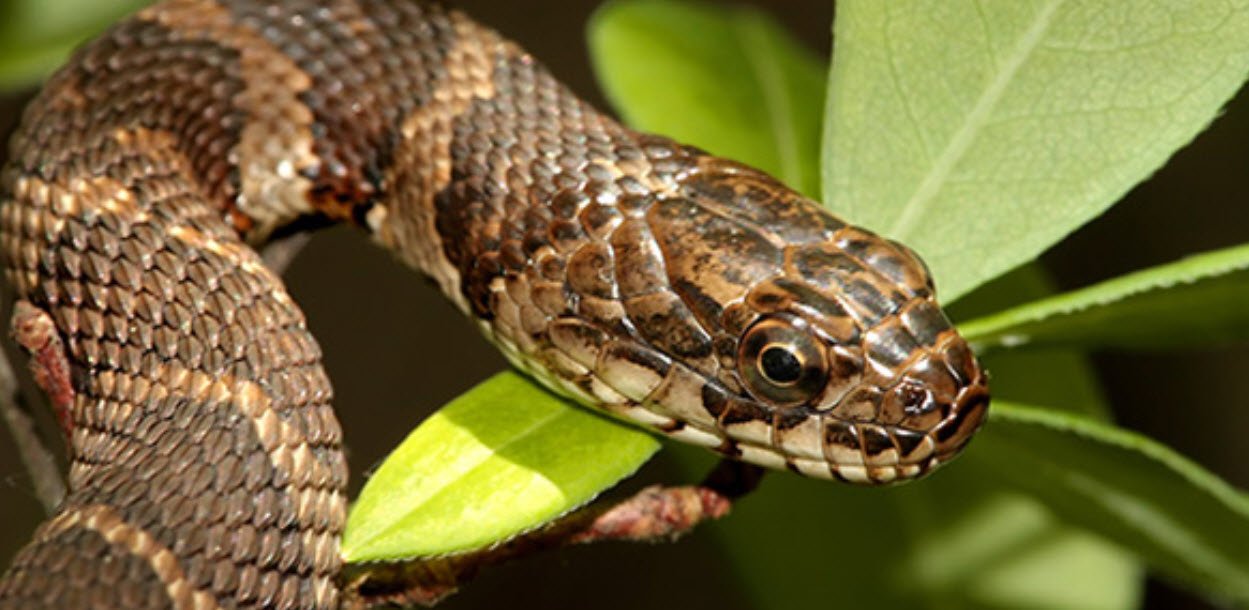
10. Plain-Bellied Watersnake (Nerodia erythrogaster)
Similar to the Northern Watersnake, the Plain-Bellied Watersnake is also semi-aquatic and primarily found near water. It has a plain coloration on its underside, with various patterns and colors on the upper part of its body. This snake feeds on fish, amphibians, and aquatic insects.
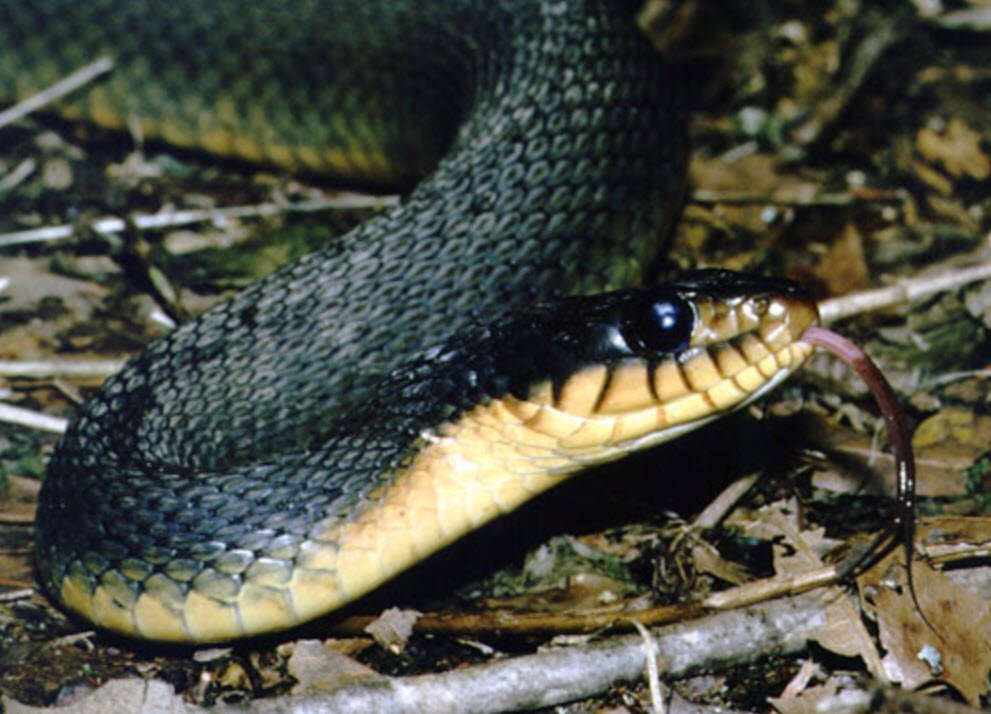
11. Southeastern Crowned Snake (Tantilla coronata)
The Southeastern Crowned Snake is a small and secretive snake with distinct light-colored markings on its head resembling a crown. It is non-venomous and primarily feeds on insects and small invertebrates.
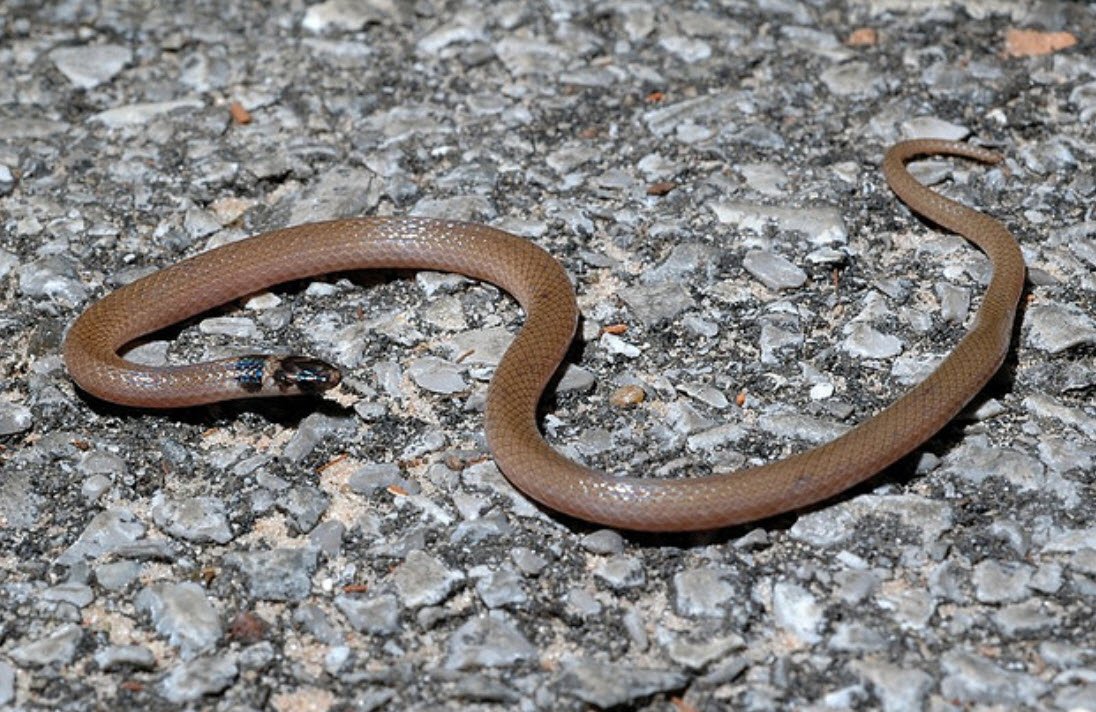
Virginia’s snake population adds to the state’s rich biodiversity, showcasing a wide range of adaptations and behaviors. Whether venomous or non-venomous, each species contributes to the delicate balance of the ecosystem, making them an integral part of Virginia’s natural heritage. Understanding and appreciating these reptiles are crucial for conserving and preserving the diverse wildlife that Virginia has to offer.

